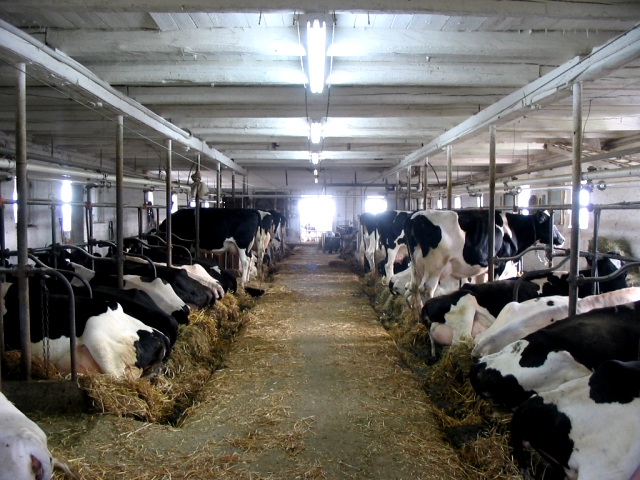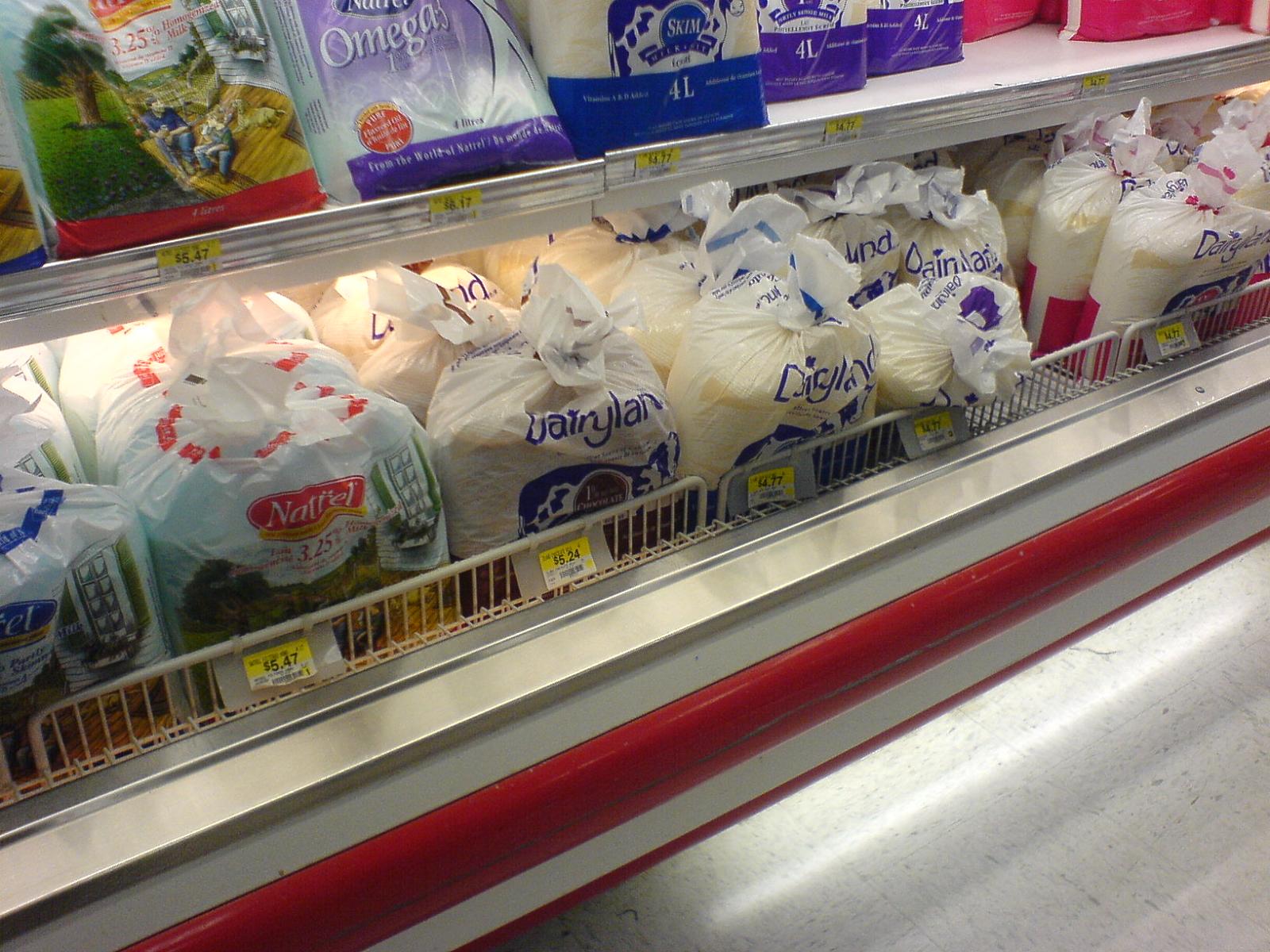|
Market Sharing Quota
The Market Sharing Quota (MSQ), In Canadian agricultural policy, is the federally-determined target for the amount of industrial milk to produce nationwide each year as part of its policy of supply management. It is determined by estimating the domestic demand for dairy products on a butterfat basis, adding about 3% to cover exports and subtracting the volume of approved imports. Provincial shares of the national quota are adjusted in line with changes in the total, and each province allocates its share to its producers according to its own quota policies. The Canadian Dairy Commission sets a target price for industrial milk based on production costs, including a return to labour, capital and management. Dairy farmers receive a payment from their provincial marketing board on in-quota deliveries of industrial milk. Farmers who produce in excess of their quota do not receive payments and, in some provinces, may face a financial penalty. Each province maintains and administers i ... [...More Info...] [...Related Items...] OR: [Wikipedia] [Google] [Baidu] |
Milk
Milk is a white liquid food produced by the mammary glands of mammals. It is the primary source of nutrition for young mammals (including breastfed human infants) before they are able to digest solid food. Immune factors and immune-modulating components in milk contribute to milk immunity. Early- lactation milk, which is called colostrum, contains antibodies that strengthen the immune system, and thus reduces the risk of many diseases. Milk contains many nutrients, including protein and lactose. As an agricultural product, dairy milk is collected from farm animals. In 2011, dairy farms produced around of milk from 260 million dairy cows. India is the world's largest producer of milk and the leading exporter of skimmed milk powder, but it exports few other milk products. Because there is an ever-increasing demand for dairy products within India, it could eventually become a net importer of dairy products. New Zealand, Germany and the Netherlands are the largest export ... [...More Info...] [...Related Items...] OR: [Wikipedia] [Google] [Baidu] |
Supply Management (Canada)
Canada's supply management (), abbreviated SM, is a national agricultural policy framework used across the country, which controls the supply of dairy, poultry and eggs through production and import controls and pricing mechanisms. The supply management system was authorized by the 1972 ''Farm Products Agencies Act'', which established the two national agencies that oversee the system. The Agriculture and Agri-Food Canada federal department is responsible for both the Canadian Dairy Commission and its analogue for eggs, chicken and turkey products, the Farm Products Council of Canada. Five national supply management organizations, the SM-5 Organizations — Egg Farmers of Canada (EFC), Turkey Farmers of Canada (TFC), Chicken Farmers of Canada (CFC), the Canadian Hatching Egg Producers (CHEP) and the Ottawa-based Canadian Dairy Commission (CDC), a Crown corporation — in collaboration with provincial and national governing agencies, organizations and committees, administer the sup ... [...More Info...] [...Related Items...] OR: [Wikipedia] [Google] [Baidu] |
Canadian Dairy Commission
The Canadian Dairy Commission (French: ''Commission canadienne du lait'') is an Ottawa-based Government of Canada Crown Corporation that plays a role of administrator, facilitator and stakeholder in the public policy related to the Canadian dairy industry. The CDC's mandate is to coordinate dairy policies in a jurisdiction that is shared between both provincial and federal governments. In the early 1970s, when the dairy industry became the first industry in Canada to be operated under the national supply management system, the CDC was named as facilitator and administrator coordinating dairy policies and providing a framework for the management of the Canadian dairy industry. Mandate The CDC coordinates dairy policies in a jurisdiction that is shared between both provincial and federal governments. In its role as stakeholder and facilitator, the CDC provides a framework for the management of the Canadian dairy industry. The CDC's mandate was to ensure producers received a fair r ... [...More Info...] [...Related Items...] OR: [Wikipedia] [Google] [Baidu] |
Milk Quota
Milk is a white liquid food produced by the mammary glands of mammals. It is the primary source of nutrition for young mammals (including breastfed human infants) before they are able to digest solid food. Immune factors and immune-modulating components in milk contribute to milk immunity. Early-lactation milk, which is called colostrum, contains antibodies that strengthen the immune system, and thus reduces the risk of many diseases. Milk contains many nutrients, including protein and lactose. As an agricultural product, dairy milk is collected from farm animals. In 2011, dairy farms produced around of milk from 260 million dairy cows. India is the world's largest producer of milk and the leading exporter of skimmed milk powder, but it exports few other milk products. Because there is an ever-increasing demand for dairy products within India, it could eventually become a net importer of dairy products. New Zealand, Germany and the Netherlands are the largest exporters ... [...More Info...] [...Related Items...] OR: [Wikipedia] [Google] [Baidu] |
Supply Management (Canada)
Canada's supply management (), abbreviated SM, is a national agricultural policy framework used across the country, which controls the supply of dairy, poultry and eggs through production and import controls and pricing mechanisms. The supply management system was authorized by the 1972 ''Farm Products Agencies Act'', which established the two national agencies that oversee the system. The Agriculture and Agri-Food Canada federal department is responsible for both the Canadian Dairy Commission and its analogue for eggs, chicken and turkey products, the Farm Products Council of Canada. Five national supply management organizations, the SM-5 Organizations — Egg Farmers of Canada (EFC), Turkey Farmers of Canada (TFC), Chicken Farmers of Canada (CFC), the Canadian Hatching Egg Producers (CHEP) and the Ottawa-based Canadian Dairy Commission (CDC), a Crown corporation — in collaboration with provincial and national governing agencies, organizations and committees, administer the sup ... [...More Info...] [...Related Items...] OR: [Wikipedia] [Google] [Baidu] |
Agriculture In Canada
Canada is one of the largest agricultural producers and exporters in the world. As with other developed nations, the proportion of the population agriculture employed and agricultural GDP as a percentage of the national GDP fell dramatically over the 20th century, but it remains an important element of the Canadian economy. A wide range of agriculture is practised in Canada, from sprawling wheat fields of the prairies to summer produce of the Okanagan valley. In the federal government, overview of Canadian agriculture is the responsibility of the Department of Agriculture and Agri-Food. Major agricultural products Various factors affect the socio-economic characteristics of Canadian agriculture. The 2006 ''Census of Agriculture'' listed seven: Quantity and type of farms; Biogeography: crop and land use areas; land management practices; Quantity of livestock and poultry; Agricultural engineering: Farm machinery and equipment; Farm capital; Farm operating expenses and receip ... [...More Info...] [...Related Items...] OR: [Wikipedia] [Google] [Baidu] |
.jpg)

.jpg)

